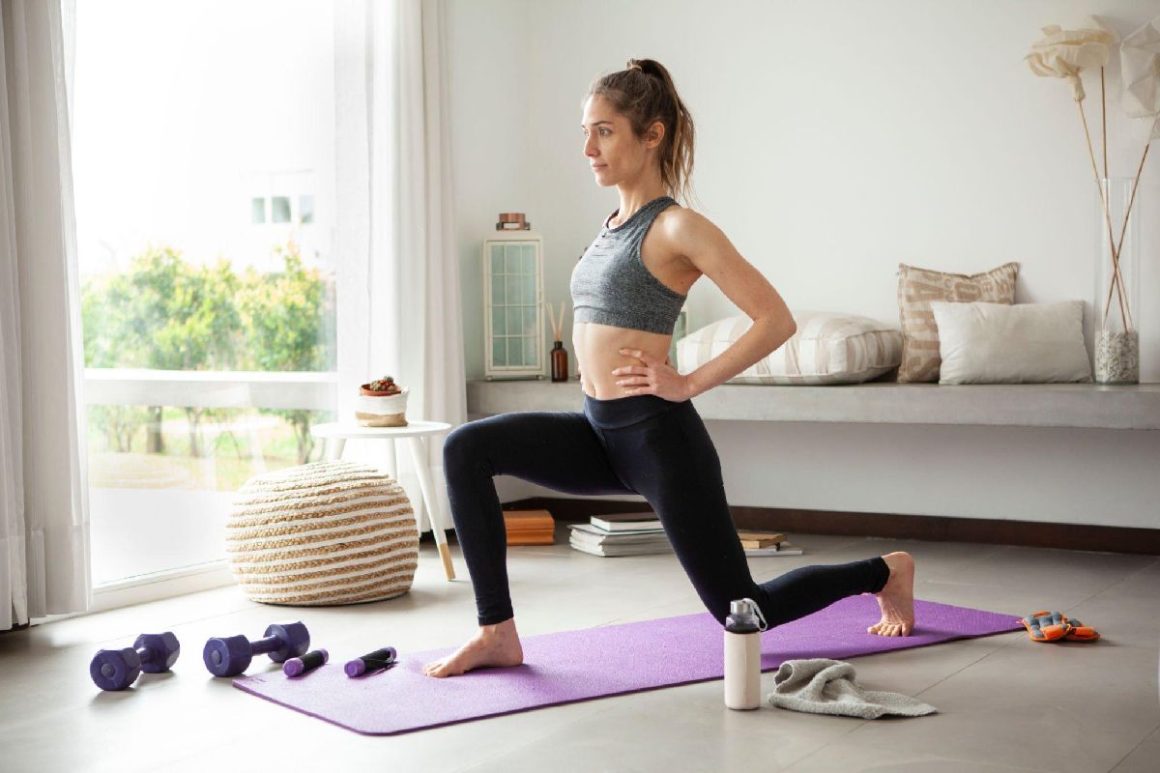Full-body exercises are physical movements that simultaneously engage multiple muscle groups across various body parts. Unlike isolation exercises, which focus on a single muscle group, full-body exercises target a wide range of muscles, creating a comprehensive and efficient workout. These exercises often mimic natural movements and are designed to promote functional strength, agility, and overall fitness.
The importance of full-body exercises lies in their ability to provide a balanced and well-rounded approach to fitness. By engaging multiple muscle groups in a single movement, they promote better coordination, stability, and muscle integration. This not only leads to improved strength but also enhances overall physical performance in daily activities and sports.
Moreover, full-body exercises can be highly time-efficient, making them ideal for individuals with busy schedules. They allow individuals to maximize their workout in a shorter amount of time, which is particularly beneficial for those seeking effective fitness routines without long, drawn-out sessions.
Additionally, these exercises promote a balanced physique by preventing muscle imbalances that can occur with a focus solely on isolated muscle groups. This helps reduce the risk of injuries and supports long-term joint and muscle health. Overall, incorporating full-body exercises into a fitness routine is crucial for achieving a well-rounded, functional level of fitness.
Furthermore, the good news is that you can easily do all your exercises at home if you are unable to make a regular schedule to join gym classes or fitness classes, thanks to technology.
You can also start with YouTube, which offers hundreds of free exercise videos. To stream videos without lag, you only need a stable and fast internet connection at home such as Kinetic Windstream to keep your fitness journey on track.
Now here are some highly effective full-body exercises that all of you must try.
- Squats: Squats engage the legs, glutes, core, and lower back. For building strength in the lower body, they are excellent.
- Deadlifts: Deadlifts work the entire posterior chain, including the legs, glutes, lower back, and upper back.
- Push-Ups: Push-ups target the chest, shoulders, triceps, and core. Well, depending on your fitness level, they can be altered.
- Pull-Ups/Chin-Ups: These compound movements engage the back, shoulders, biceps, and core. Strengthening the upper body is great with them.
- Bench Press: This exercise primarily targets the chest, shoulders, and triceps. It’s an essential part of many strength-training routines.
- Plank: Planks engage the entire core, including the abdominal muscles, obliques, and lower back.
- Burpees: Burpees are a full-body, high-intensity exercise that incorporates elements of cardio, strength, and coordination.
- Kettlebell Swings: This dynamic movement engages the hips, glutes, lower back, and shoulders. It’s excellent for building power and explosiveness.
- Clean and Press: This is a combination that involves lifting a weight from the ground to the shoulders and then pressing it overhead. It engages the legs, back, shoulders, and arms.
- Russian Twists: While primarily targeting the obliques, Russian twists also engage the entire core and help improve rotational strength.
- Mountain Climbers: This is a dynamic exercise that works the chest, shoulders, core, and legs, while also providing a cardiovascular component.
- Lunges: Lunges engage the legs, glutes, and core. Different muscle groups can be targeted by performing them in different directions.
However, when engaging in full-body exercises, it’s important to keep several key considerations in mind to ensure a safe and effective workout routine.
- Firstly, proper form is paramount. Pay close attention to your posture and movement patterns to avoid strain or injury. Begin with lighter weights or resistance bands and gradually increase as your strength and confidence grow.
- Secondly, prioritize compound movements. These exercises, which engage multiple muscle groups simultaneously, provide a comprehensive workout. So, incorporate exercises like squats, deadlifts, push-ups, and rows into your routine. Balancing opposing muscle groups is crucial. Pair exercises that work opposing muscle groups, such as chest and back, to maintain muscle symmetry and prevent imbalances.
- Thirdly, don’t neglect your core. A strong core stabilizes the body and supports proper form during exercises. Include planks, Russian twists, and other core-focused movements regularly. Allow for adequate recovery time. As soon as a workout is over, the muscles need time to repair and grow stronger. Aim for at least 48 hours of rest between full-body sessions.
- As for frequency, aim for three to four full-body workouts per week. This provides enough stimulus for muscle growth and overall strength development while allowing sufficient recovery time. Remember to warm up and cool down. Before your workout, engage in dynamic stretches and light cardiovascular activity to prepare your body. Afterward, perform static stretches to improve flexibility and reduce muscle tension.
- Include variety in your routine. Introduce new exercises or alter existing ones to prevent plateaus and keep your workouts engaging. Listen to your body. If you feel discomfort or pain during exercise, pay attention to it. In order to avoid potential injuries, muscle soreness needs to be distinguished from potential injuries.
Concluding Lines
Full-body exercises offer a complete and efficient approach to fitness. By combining compound movements, maintaining proper form, and prioritizing balanced muscle development, you can achieve a well-rounded level of strength and functionality. Consistency, along with proper rest and recovery, is key.
Remember to adjust your routine based on your fitness level and goals, and always consult a fitness professional if you have any concerns or medical conditions. With these considerations in mind, you can embark on a safe and effective full-body workout regimen.


